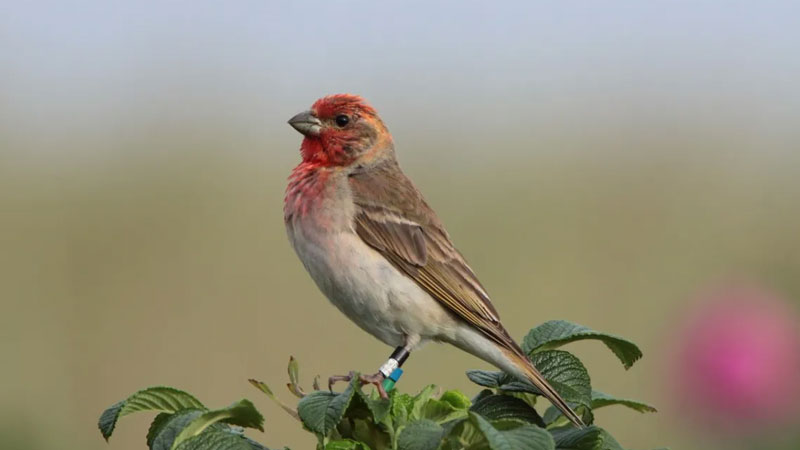Common Rosefinch
Carpodacus erythrinus Pallas (1770)
Photo: © Roland Neumann

Appearance
Medium-sized finch with stout beak. Adult males bright red but paler red to white underparts. Females grey with whitish underparts. First summer males usually green-grey.
Natural History
The Common Rosefinch is widespread in the Northern Palearctic, except the Far North. It is also patchily distributed further south, in the Himalayan region, the Pamir and South East Asia.
Due to its eye-catching appearance and far-reaching conspicious singing, the Common Rosefinch cannot be overlooked or overheard in the field.
Besides a number of calls, the Common Rosefinch has two different types of song. Although the species is well researched, the meaning of both song types has not yet been clarified.
The short song is the common song type (3-5 syllables) and is often recognisable on an individual level, whereas the long song (6-8 syllables) seems to be performed much rarer.
Taxonomy
Carpodacus erythrinus erythrinus
-> N, C and E Europe to C Siberia
Carpodacus erythrinus grebnitskii
-> E Siberia, N Mongolia, NE China and Korea
Carpodacus erythrinus kubanensis
-> Turkey, the Caucasus, N Iran and Turkmenistan
Carpodacus erythrinus ferghanensis
-> E Kazakhstan to W China, W Himalayas, Pakistan and Afghanistan
Carpodacus erythrinus roseatus
-> C and E Himalayas to C and S China
Object of study
Function of both song types.
Known Song Types

PFR07413, 26/05/2012, Großdeuben, Germany, Patrick Franke

27/06/2016, Nienhagen, Germany, Roland Neumann
complete and incomplete song

PFR14845, 10/06/2018, Buchhorst, Germany, Patrick Franke
note plasticity in second song



